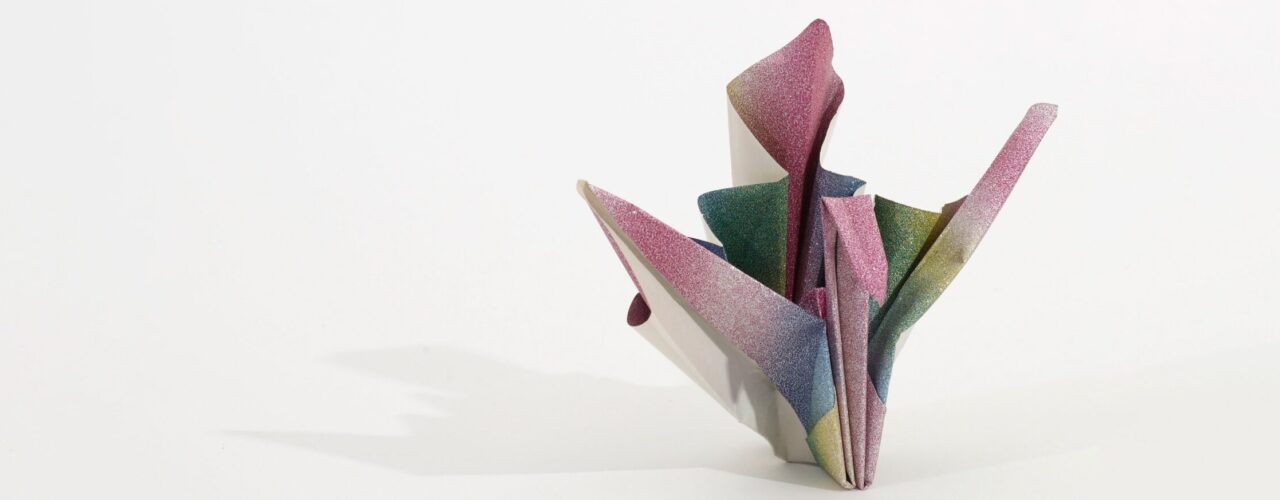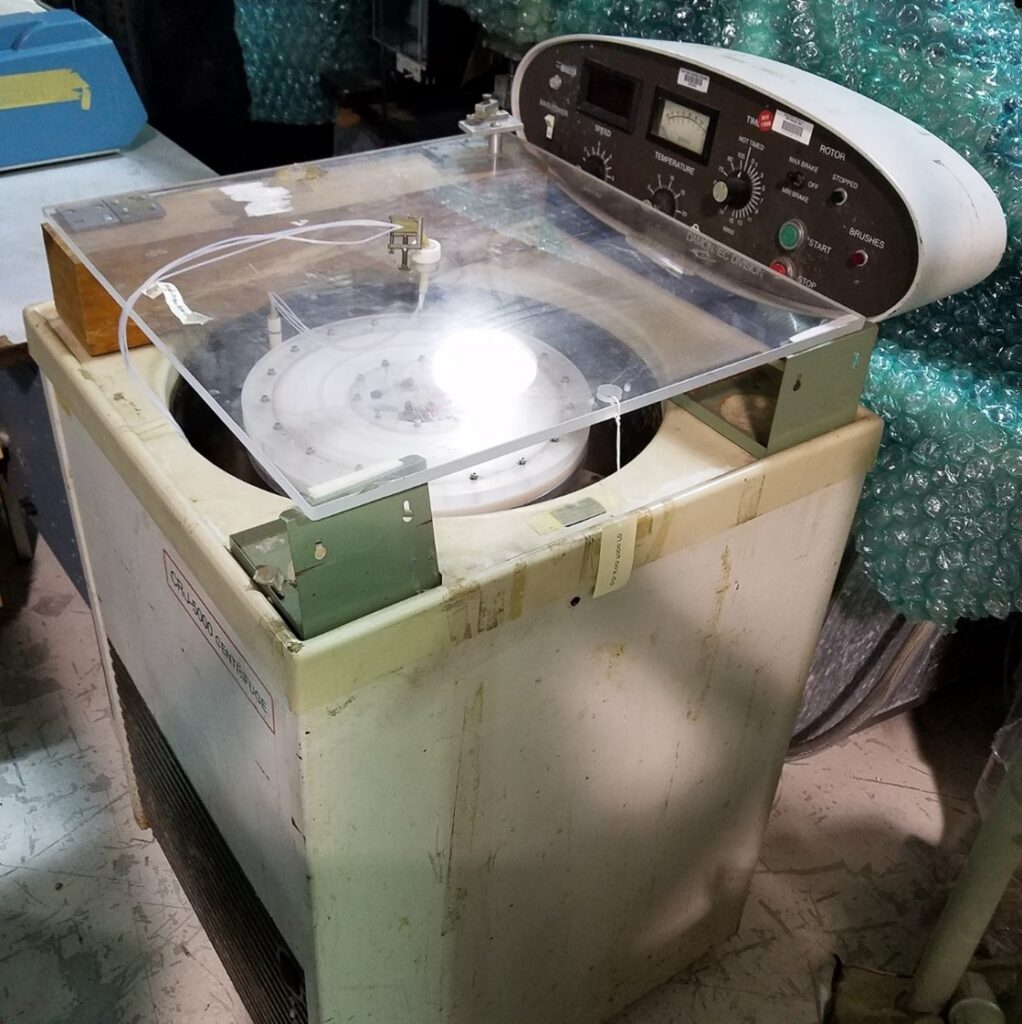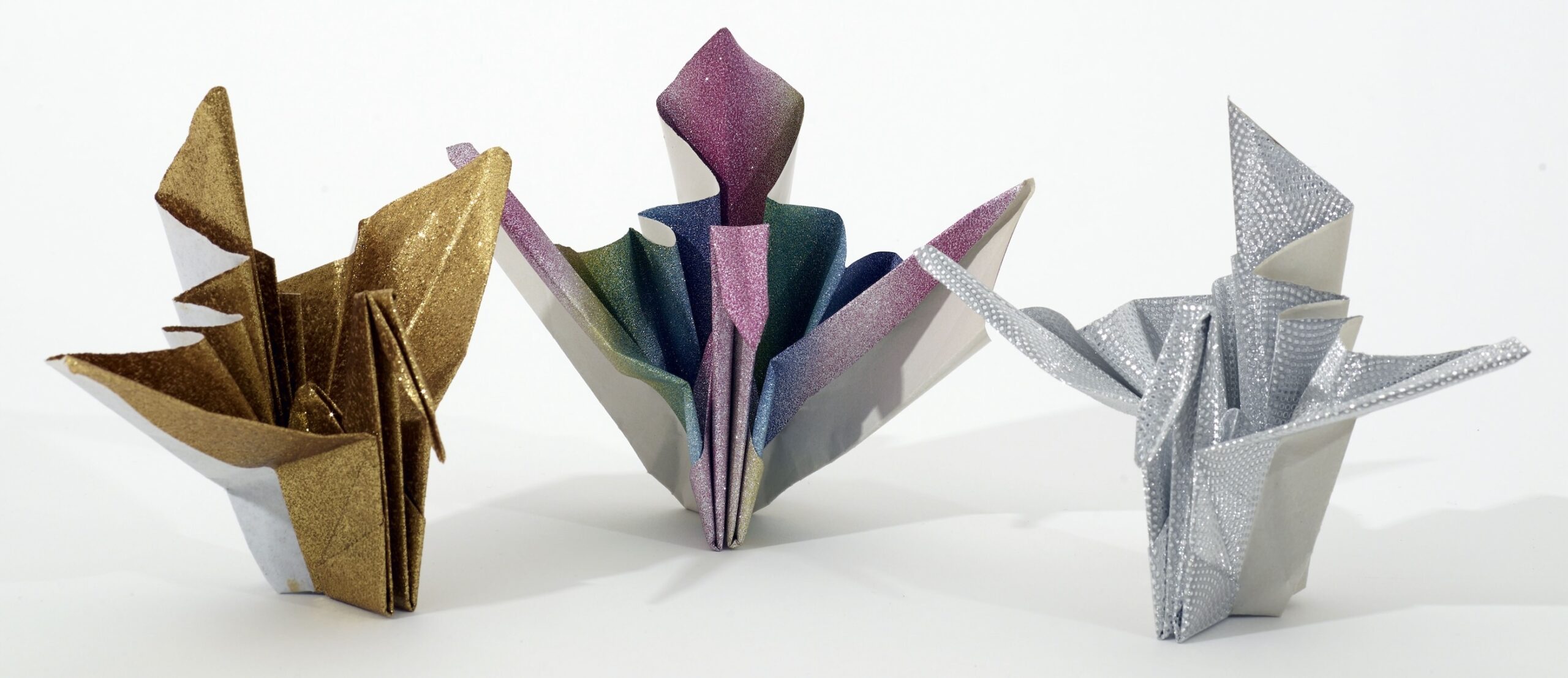Lost Stories and Missed Opportunities
What we can no longer learn from Yoichiro Ito.

What we can no longer learn from Yoichiro Ito.
The sparkly pink, purple, blue, and green paper crane above sits on my office desk as I work. It reminds me of physician-scientist Dr. Yoichiro Ito, who gifted me this crane and several other pieces of origami when we met at his home to discuss plans for his oral history interview. The crane also reminds me of the importance of my role as an oral historian and the urgency of our work in the Center for Oral History at the Science History Institute.
My colleague Shuko Tamao and I planned to interview Ito in the fall of 2023 to capture a nuanced and detailed history of his scientific career, to ask him about his life more broadly, and to learn about his experiences migrating to the United States; this latter aspect would help further our understanding of immigration and science, a topic we are exploring through other oral histories in our collection.
One of Ito’s colleagues, Adrian Weisz, had recommended him as an interviewee due to Ito’s significant contributions in the field of separation science, including his cutting-edge work on countercurrent chromatography, a technique used to separate a chemical mixture into its components.
Ito was born in Osaka, Japan, in 1928 and trained to become a physician at Osaka City University Medical School. He came to the United States to complete two residencies in pathology and then returned to Osaka City University Medical School to teach. Ito moved back to the United States in 1968 to work at the Laboratory of Technical Development in the National Heart, Lung, and Blood Institute of the National Institutes of Health (NIH).

He soon decided to settle permanently in the United States and worked at the NIH for the rest of his career, founding the NIH’s Laboratory of Bioseparation Technology. Ito’s many inventions, including a coil planet centrifuge and a rotating-seal-free flow-through centrifuge, have aided in the separation and analysis of biomedical materials.
Our first interview session with Ito was canceled due to an illness. We assumed we would start the interview a few months later when he recovered. Sadly, he passed away in October 2023 at the age of 94.
Hearing the news about Ito’s death was jarring. A couple of months prior, I had been in regular contact with him via email, and Shuko and I were looking forward to learning more about his work and life through our planned oral history interview. While I’m grateful that I had the chance to meet such an innovative scientist who was generous and kind, I wish we had learned about him sooner so that we would have had the opportunity to hear him tell his stories and to let him share his personal and professional experience and expertise for the benefit of other scientists and historical researchers alike.
Ito’s scientific contributions live on in published literature and through his groundbreaking inventions; his memory is preserved through his family and the personal connections he had with friends, colleagues, and mentees over his long career. The scientific literature lets us know what Ito did, but not who he was, and the remembrances of family, friends, and colleagues are ephemeral. His passing before we were able to record his oral history means that all of his memories, his insights, his beliefs, as told through his own voice, are gone forever.
We will never know what it was like for him growing up in Japan and then living and working there in the post-atomic age; why he chose to study medicine and medical science and the differences he might have seen in medical research cultures between the United States and Japan; how his personal beliefs may have contributed to his scientific pursuits; why he performed the experiments he did; or what impact he wanted to make on science through his research projects.
Why are these recollections and insights critical for understanding the histories of science and engineering? Because science and engineering are fundamentally human endeavors: people with various cultural, social, political, economic, and religious beliefs are doing the work to study the world around us and their belief systems play an important role in how scientists and engineers investigate and interrogate the natural world.
Knowing why they pursued their work, how they thought of a problem and the ways to solve it, and why they chose to collaborate with certain colleagues and not others, for example, are as critical to understanding the histories of science and engineering as the data they collected and the patents they received. The answers to the questions we could not ask of Dr. Ito leave us with gaps in our knowledge of this scientist’s story and, consequently, gaps in the history of science more broadly.
Regrettably, our archive is, in the case of Ito’s story, emptier than we would like. His voice, memories, and innovations are absent from our museum, archival, and oral history collections, though we do have some books related to his scientific work in our library. A researcher looking into how scientists innovate or a student wanting to learn more about the immigration journeys of Japanese American scientists will struggle to find his story and the stories of many other scientists and engineers who passed before we had a chance to interview them.

I will continue to share Ito’s story—the little bit of it that I learned from interacting with him many months ago—and show office visitors the paper cranes. I know that the cranes and my recollections will fade as time passes, but as long as the cranes remain on my desk, they will serve as a reminder of the loss and the urgency involved in oral history collecting.
When Ito gifted me the cranes, I was not aware of their significance, and I recently learned from Shuko, who is originally from Hiroshima, Japan, that cranes have great symbolic meaning in Japanese folklore. In Japanese myth, cranes are seen as birds who can live for a thousand years, and represent good luck and longevity. Some believe that if a person can fold a thousand origami cranes, one for each year of a crane’s life, they may have one of their wishes fulfilled.
This belief became particularly popular after people learned of the story of Sadako Sasaki, a girl who died of leukemia 10 years after she survived the 1945 atomic bombing of Hiroshima. Though Sadako’s wish to be cured of leukemia went unfilled even after folding more than a thousand cranes, her story inspired her classmates, who raised money for a monument of Sadako and all the children who died in the atomic bombings to be placed in Peace Park, Hiroshima, Japan.
So as I look at the sparkly pink, purple, blue, and green paper crane on my desk, I am reminded of Ito and our wish that we had the chance to record his oral history interview. We do not know what memories, insights, and tales Ito planned to share with us, but we do know that they are gone forever. And that, sadly, is the case for many other scientists and engineers who may pass before we have the privilege of interviewing them. But we remain hopeful that we will be able to capture many more important histories of science and engineering before their narrators fade away forever. Maybe we will start folding some cranes of our own to help us in our journey.
We are grateful to Dr. Adrian Weisz, who recommended that we interview Dr. Yoichiro Ito and connected us with him.
Thank you to Jahna Auerbach for photographing the paper cranes for this post.
How to read a book when the pages are out of order.
An Institute fellow sheds light on an enigmatic trio.
We’re still scratching our heads over how the brain works.
Copy the above HTML to republish this content. We have formatted the material to follow our guidelines, which include our credit requirements. Please review our full list of guidelines for more information. By republishing this content, you agree to our republication requirements.